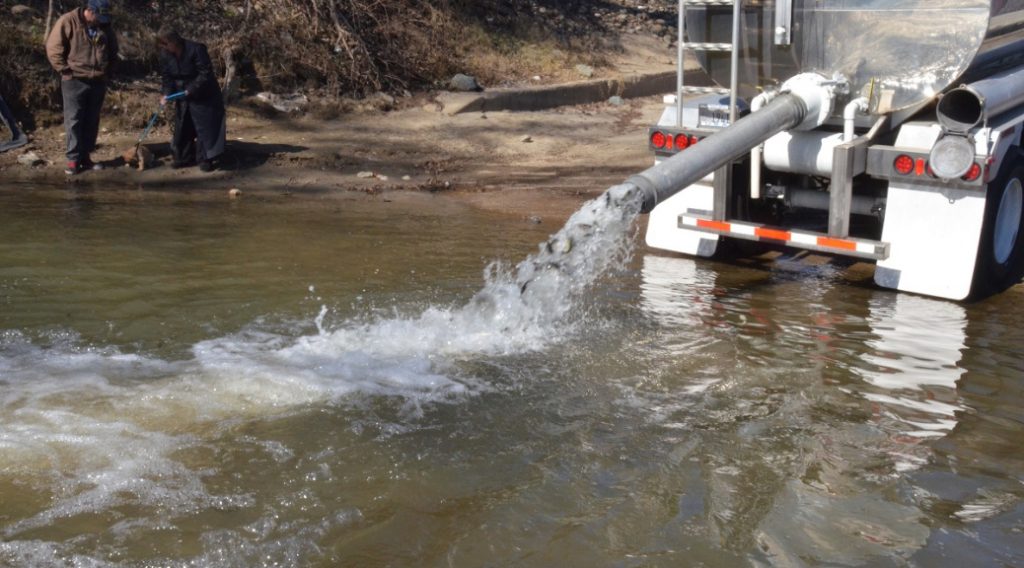
If you want to catch landlocked steelhead, Thermalito Afterbay on the Feather River will be the place to go this season.
The California Department of Fish and Wildlife (CDFW) has already planted 150,000 Feather River steelhead in the Thermalito Afterbay this year – and will stock another 50,000 fish in the beginning of March.
“All of the fish already planted are put and grow fish, ranging from 6 to 9 to the pound,” said Penny Crawshaw at the Feather River Fish Hatchery. “We will stock another 50,000 steelhead, weighing 1 to 2 fish per pound, around March 1.”
The large numbers of steelhead on hand are a result of the hatchery taking extra eggs last year during the Oroville Dam Spillway crisis. “We were told to save as many eggs as could in case we had any problems. We saved almost 700,000 eggs, thanks to the pumping system that was installed,” said Crawshaw.
They also planted 500,000 steelhead smolts at 4 to the pound in the Feather River this the week of February 12. The first load of 150,000 fish went into the river on February 12.
Large numbers of adult steelhead continue to return to the hatchery. “We’ve trapped around 3,000 steelhead to date,” she stated. “During our first day of spawning steelhead, we counted a total of 648 males and 664 females trapped in the hatchery.”
In addition to the smolts and catchable steelhead they are releasing into the afterbay, the hatchery staff is also releasing the kelts – spawned males – into the river at Verona and into the afterbay. They are releasing all of the spawned females and all wild steelhead into the Feather.
“We’ve released around 250 kelts into the afterbay and 250 kelts into the river at Verona to date,’ she said. “We are doing this to prevent them from keep returning to the hatchery after being spawned.”
The CDFW also planted 500,000 yearling steelhead into the Feather River in February.
“More than a million steelhead eggs were endangered in February 2017 when silt and debris overwhelmed the hatchery water system following the spillway failure,” according to the CDFW. “With less than 72 hours to complete fixes on aeration and filtration systems CDFW engineers went to work to save the steelhead eggs stacked in hundreds of trays at the hatchery.”
The CDFW said engineers redesigned the water in-flow system using city water for the incubating steelhead. They also brought in massive six-foot-tall charcoal filters to purify the city water and reconfigured the aeration system. These alterations made the release of more than 500,000 steelhead possible.
“CDFW engineers did something that had never been done successfully before on a massive scale,” said Feather River Fish Hatchery Manager Anna Kastner. “The eggs were in a fragile state of incubation and could not be moved, so innovation was the only option. The use of city water for incubation paid off.”
CDFW Engineers George Heise and Beth Lawson, working with hatchery personnel, pathologists and biologists, conferred on the requirements of redesigning the system. Once agreed upon they went to work.
“Our options were limited and something had to be implemented immediately. The team told us what they needed and we went to work making it happen,” Heise said.
Meanwhile, anglers are hooking adult steelhead on the Feather from below the hatchery down to Gridley while using salmon roe, nightcrawlers and flies. Fishermen have also been catching steelhead in the afterbay on nightcrawlers and swimbaits. Information: (530) 538-2222.
